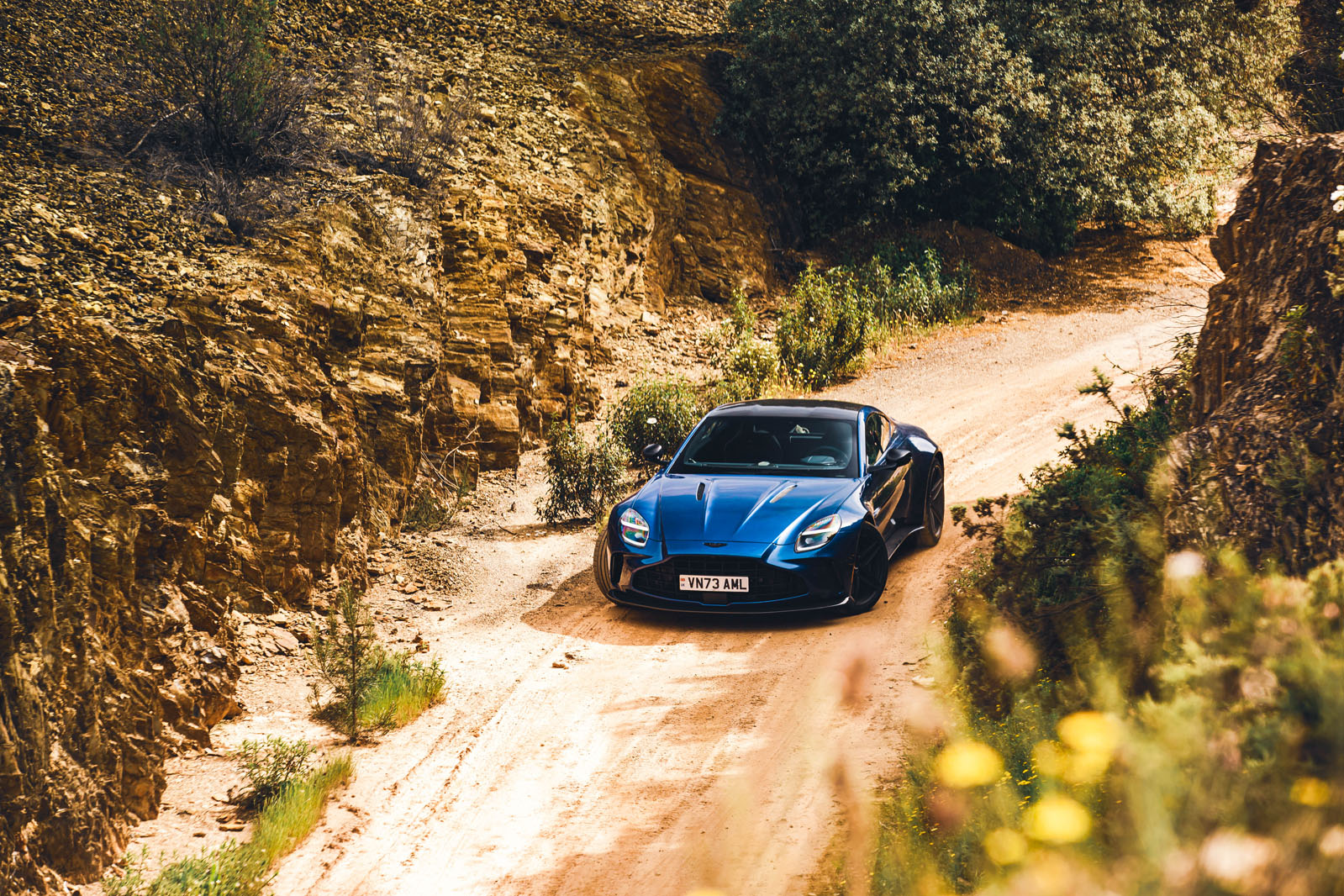In appearance, the 2024 Vantage is mildly tweaked, enhanced and more muscly than the car that preceded it, but it maintains a DNA that has been around since the V8 Vantage launch of 2005. If you see this car and that earlier model together, you’ll know they’re from the same family.
The latest model is now at 1981mm wide across the body, which is a not insignificant width. The chassis, a blend of aluminium extrusions and castings, is a similar architecture to the DB12’s, though this car is shorter of wheelbase than that (at 2692mm) and in overall length (at 4496mm) because it’s a sports car, not a grand tourer.
As we write, it’s Aston’s most focused series model, though one might expect a more hardcore variant of the Vantage later, and we’re still expecting more mid-engined series production cars too. Aston’s overall range plan has altered a few times over the years, but cars like the Vantage and a DB model are a constant.
But despite this Vantage being a sporting model, it is, according to Aston Martin director of vehicle performance Simon Newton, a road car rather than a track car. We have tried it in both situations. The chassis is more torsionally rigid than ever. Aston makes no claims for global torsional rigidity, but points to places where it has enhanced local stiffnesses for his model: there are sheer panels front and rear, the front longerons are better tied together, and the front top mounting point brace is both lighter and stiffer than in previous Astons, plus there’s one across the boot at the rear too.
The engine is a Mercedes-AMG 4.0-litre twin-turbo V8 mated to an eight-speed ZF automatic transmission with a 5%-shorter final drive than the Vantage’s predecessor (“we liked the ratios,” says Newton), while it has electric power steering with, unusually for a car on this architecture, no NVH-reducing coupling where the steering column attaches to the chassis, to increase steering precision.
It’s rear-drive via an electronically controlled limited-slip differential, with double-wishbone suspension all around with coil springs and Bilstein adaptive dampers and bespoke Michelin Pilot Sport S5 tyres (275/35 R21 front and 325/30 R21 rear).











































